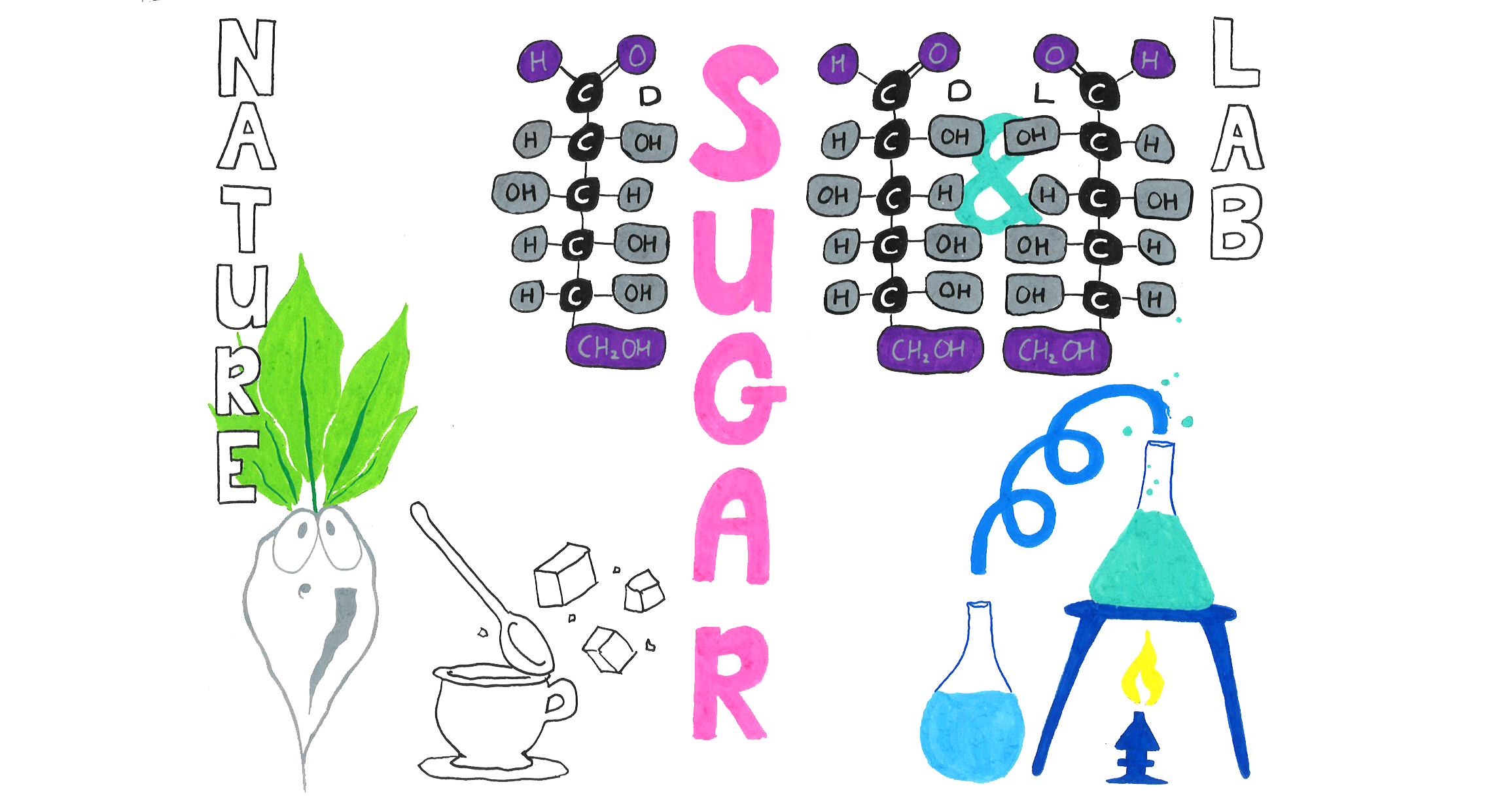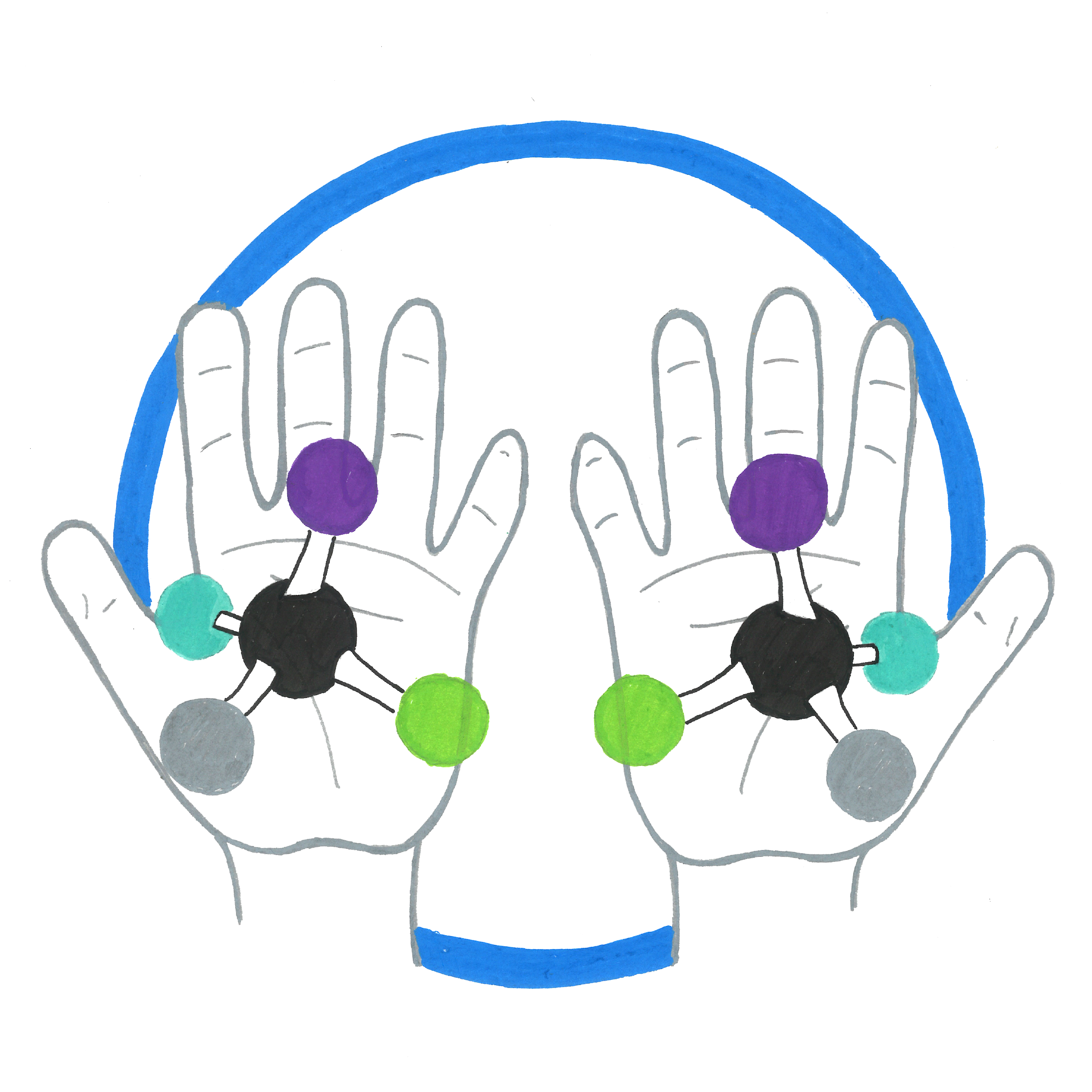Posts from March 2021
The riddle of life's single-handedness
Searching for unambiguous signs of life
Despite the fact that we are in the middle of the COVID-19 pandemic, every
week a world is opening up to me. I discover more and more how many disciplines are
helping each other to answer important research questions. Especially when we are
talking about the definition of life there are many descriptions to be found throughout
the various disciplines. All together, these hopefully provide an answer to the question:
"What is life? This week, I went digging deeper into the biology and chemistry of 'life'.
Last week, I pointed out some of the signals of life that we can identify when
we look at the Earth from outer space. With the help of satellites we can find gases in
the atmosphere, water and vegetation on the Earth's surface and over a longer period of
time we can recognise the effects of seasons and even changes in the climate.
We are looking for planets that exhibit these same (bio-)signs of life. However, one
important and unambiguous1 sign of life is still missing from this list:
HOMOCHIRALITY.

HOMOCHIRALITY • the left- or right-handedness of molecules that are characteristic for life.
When you look at your hands, you find that your left hand is the mirror image of your right hand.
This makes your hands look the same. But when you put your two hands on top of each other,
you can see that they are totally different. You cannot put the two mirror images on top of
each other to get two left hands or two right hands. ( I do often say that I have two left
hands, because I can be very un-HANDY). Objects that cannot be placed on their mirror image
are called Chiral.
This is also known as asymmetry. However, there may be a preference for one of the two mirror images.
Looking at humans, almost 88% use their righthand as their writing hand. Initially, there is
just as much 'chance' that they would have used the left hand. This specific example is
dependent on many small genetic and other influences.
Om asymmetrische, chirale moleculen te onderscheiden zeggen we ook dat ze links of rechts-handig zijn.
Vanuit de theorie zou de kans op links en rechts-handige moleculen even groot moeten zijn.
Alleen blijkt uit onderzoek dat bijna alle chirale moleculen in levende organismen
in slechts één vorm gevonden worden. Uitsluitend links of uitsluitend rechts-handig.
Zo zijn de suikers die we vinden allemaal rechtshandig, aminozuren en proteïnen linkshandig en
DNA draait altijd rond in rechtshandige helices.
The drawing above shows an example of the glucose molecule, which is more commonly known as sugar.
In the lab we can produce sugar with the help of chemical processes. According to probability calculations
these sugars will consist of 50% left-handed (L-glucose) and 50% right-handed (D-glucose, also known
as dextrose). Although L-glucose and D-glucose are simply each other's mirror image, they are quite
different. Our body can not do anything with the left-handed sugars. L-glucose tastes as sweet as D-glucose,
but we can not obtain any calories from it. This molecule can be harmful to your liver, but it can also
be kept in your intestines, where it causes fermentation. That is not so good. But have no fear: life on Earth
takes good care of us! ALL the SUGAR we find in nature is pure D-glucose. This sugar is converted into energy
in our bodies. Every cell in the human body needs this energy to perform the metabolic functions that support
life. Therefore, the existence of only D-glucose in nature is considered to be one of the signs of life.
1 Unambiguous means that if we find this, there is no other explanation than that there is life!
